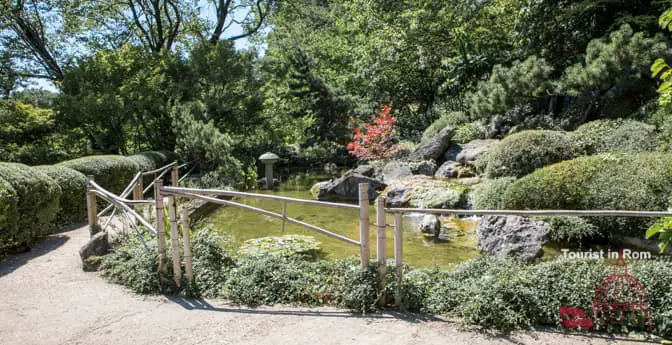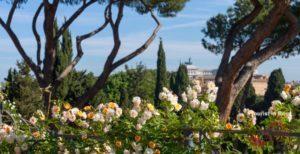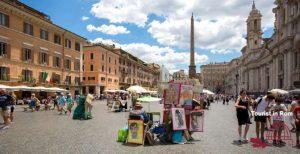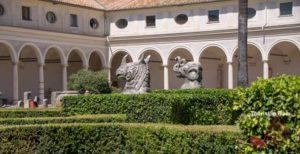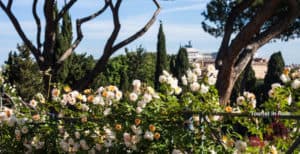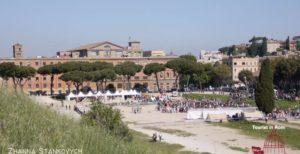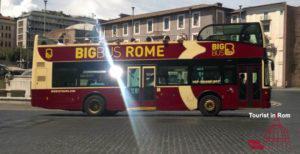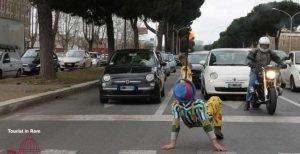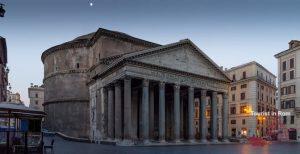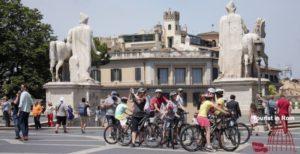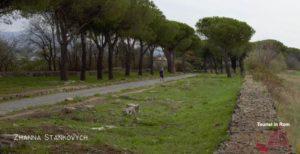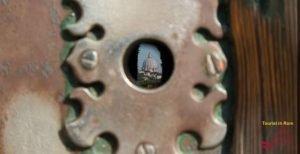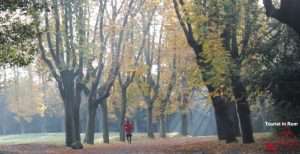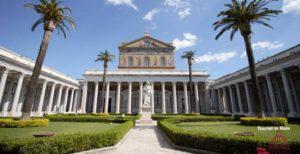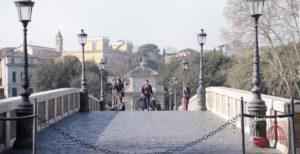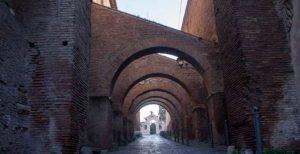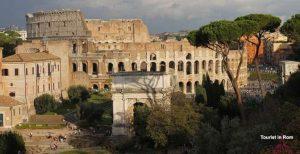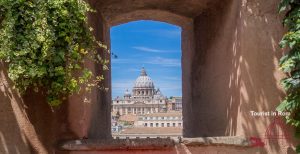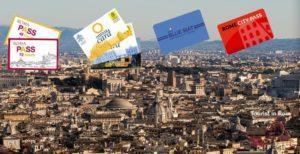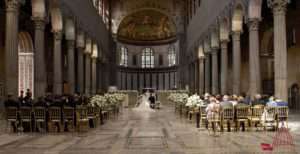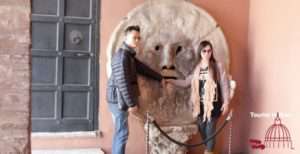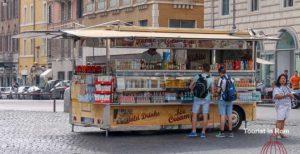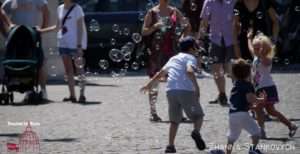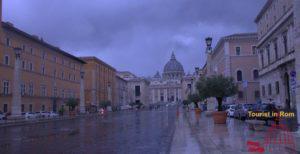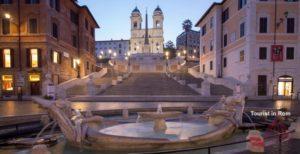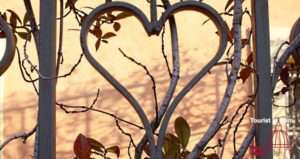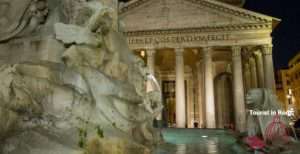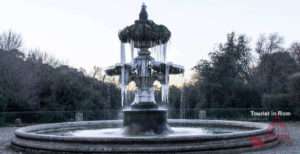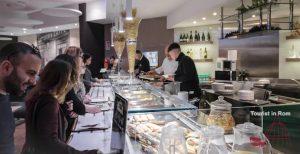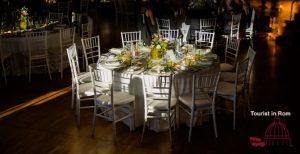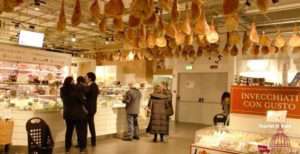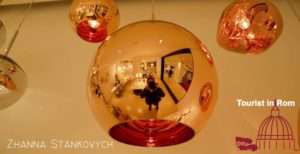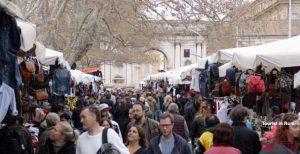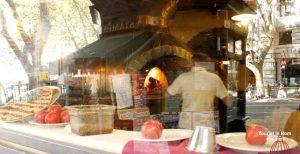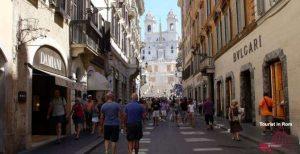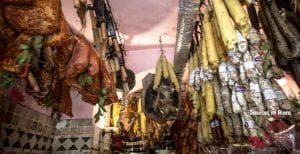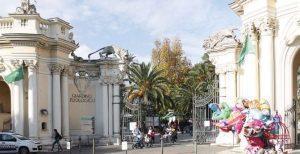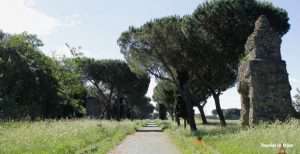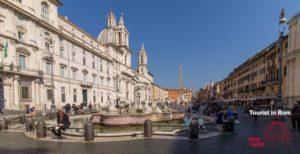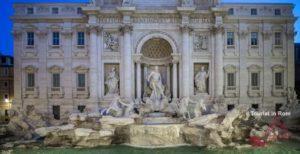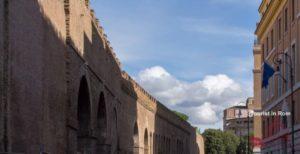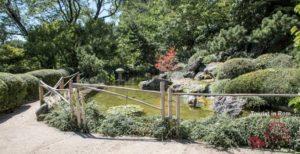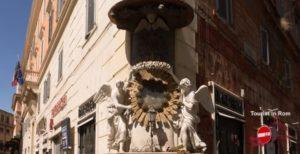The little known botanical garden of La Sapienza University is an insider’s tip. It nestles in Trastevere the hill of Gianicolo under the famous cannon from which a shot is fired every day at noon.
In the relatively small area on the slope of the Gianicolo, you are almost magically transported to highly diverse zones. Sometimes you find yourself in a palm garden, sometimes on a mountainside, in a Japanese garden or in a bamboo forest. The Botanical Garden is suitable for a pleasant walk and for a rest in the green.
Partner-Links helfen uns dabei, unsere Informationen kostenlos bereitzustellen. Für abgeschlossene Buchungen erhalten wir eine Provision – ohne Mehrkosten für Sie! Mehr
Partner links help us to provide our information free of charge. For completed bookings we receive a commission – at no extra cost to you! More
I link dei partner ci aiutano a fornire gratuitamente le nostre informazioni. Riceviamo una commissione per le prenotazioni completate, senza alcun costo aggiuntivo per voi! Di più
Monks have been cultivating plants and medicinal herbs for over 400 years. Today the garden belongs to the University of Rome La Sapienza, which manages it with scientific meticulousness.
Visit the Botanical Garden Rome
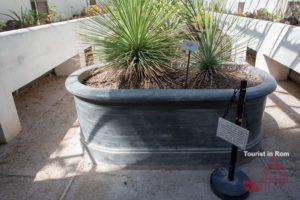
There are many villas and parks in Rome that you can visit for free. Admission is required to visit the Rome Botanical Gardens. But it is worth it and you support the University of La Sapienza with their research. You will discover very beautiful landscape compositions. We particularly liked the pine forest, the Japanese garden, the rock garden under the Paola fountain and the bamboo forest. A curiosity is the bathtub of the Swedish queen Christina from the 16th century. It is in a greenhouse.
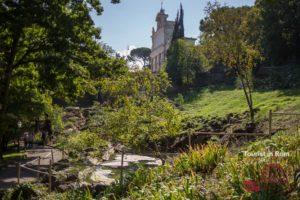
The garden is mostly on the slope of the Gianicolo and to the Japanese garden and the rock garden under the Paola fountain it goes up the hill. But the paths are easy and you can walk comfortably. The botanical garden is a wonderful oasis to relax and take a little break on your tour of Rome.
What is there to see in the Botanical Garden Rome?
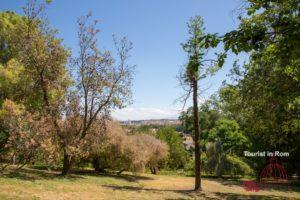
The Botanical Garden of Rome is approximately 12 hectares big. In the botanical garden there are greenhouses and a small tropical house. We were particularly impressed by the bamboo forest, we have never seen anything like it. The rock garden under the Paola fountain is also very impressive. You can take great photos there. To the right of the rock garden there is a small Japanese garden with a watercourse and a small garden shed, where you can relax nicely.
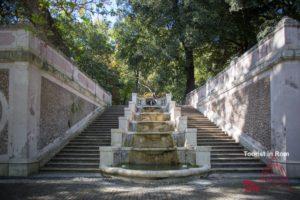
The botanical garden is planted with tall trees and you will always find shade, even on hot summer days. It has not so many visitors in the garden and you can relax wonderfully.
There are some ancient fountains in the garden. Four small fountains are right behind the entrance, of which the origin is unknown. They are located on an axis that extends to the French greenhouse.
A little further you come to the fountain of the Tritons (3) from 1742.
The stairs of the 11 fountains (9) are very picturesque. Theay are also from 1742 and with 5 tubs in the center of the stairs.
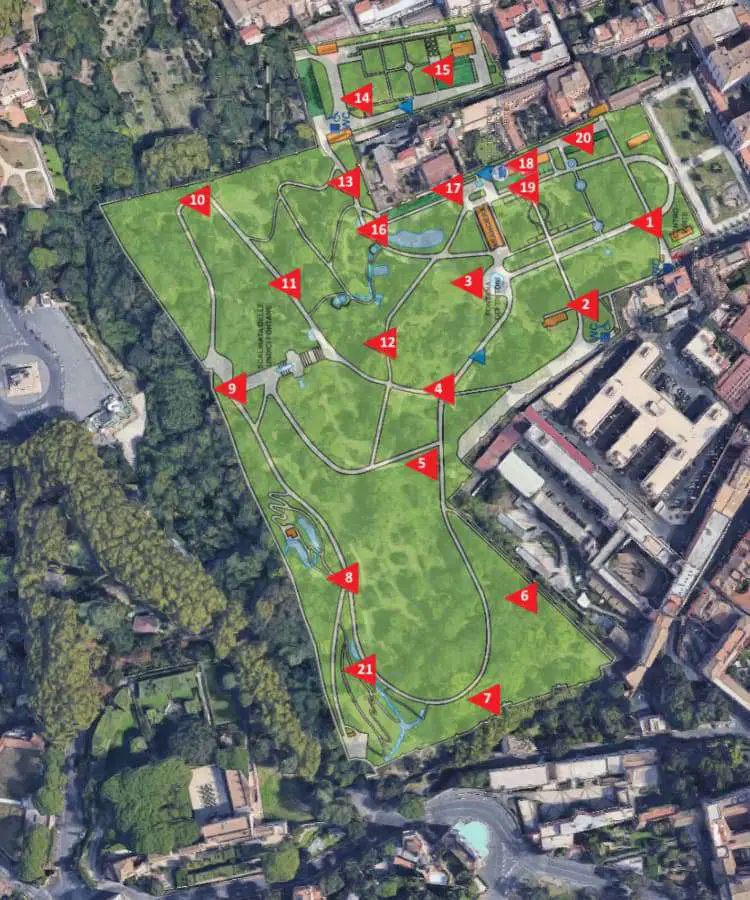
The collections of the Botanical Garden Rome
The University La Sapienza collects plants in the botanical garden according to scientific criteria. It maintains a seed bank to preserve Italian flora and is linked to botanical gardens worldwide.
Where the collections are located is marked on the attached map of the Rome Botanical Garden:
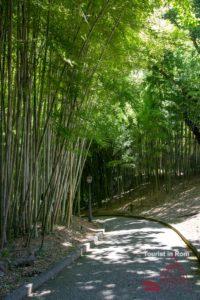
(1) (3) (4) Right at the entrance on the main path you will see the palm collection with 35 different species.
(2) In the garden of the senses you will find 40 plant species that can be recognized by touch or smell. All plants are described in Braille.
(5) Around 250 types of rose are collected in the rose garden and it is shown what natural origin cultivated species have.
(6) The fern collection is a little hidden with around 20 species.
(7) Climbing up you walk through the very impressive bamboo forest. It is one of the richest collections in Europe with 70 species.
(21) The rock garden with a collection of geophytes and Mediterranean species is very picturesquely situated under the Paola fountain.
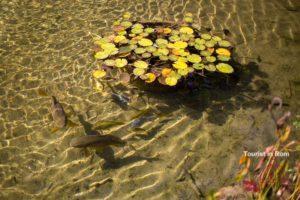
(8) In the top part of the botanical garden is the Japanese garden with 40 species, water features, small lakes and a resting place.
(10) Past the stairs of the 11 fountains you come to the Mediterranean forest with original plants from the Gianicolo hill.
(11) (12) (13) Among the approximately 70 species of nude seeds are some endangered species.
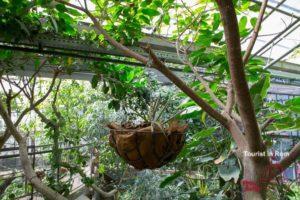
(14) The Giardino dei Semplici contains 300 plant species for medicinal use.
(15) The tropical house contains 200 species of tropical and subtropical plants.
(16) There are 32 species of aquatic plants on a stream and a small lake.
(17) You can see hundreds of succulent species in the 19th century Corsini greenhouse.
(18) The monumental 19th century greenhouse is home to euphorbia, bromeliads and carnivorous plants.
(19) In the Mediterranean garden you can observe 170 Mediterranean plant species.
(20) There are over 200 succulent species in the French greenhouse.
The botanical garden of Rome has more than 340 trees that are older than 100 years.
How to get to the Orto Botanico Roma
Access to the Botanical Garden in Rome is rather hidden on Via Corsini. When you come to Piazza Trilussa from the Sixtus Bridge, take Via Ponte Sisto on the right and continue until you see a gate on the right, Porta Settimiana. The Porta Settimiana is one of three gates in the Aurelian walls on the right side of the Tiber that have protected the Trastevere district since ancient times. Today’s gate probably dates from the 12th century. So you go through the gate to get to Via della Lungara, which was formerly known as the pilgrims’ way to St. Peter’s Basilica, also known as the “sacred road”. Via Corsini is the first on the left. John Cabot University is located on Via della Lungara, from which Via Corsini branches off.the Villa Farnesina with the famous frescoes by Raffaello and the Palazzo Corsini, which houses the National Gallery of Ancient Art and where the Swedish Queen Christina once lived.
Entry and opening times
The botanical garden has the following opening times:
April – October: 9 a.m. – 6.30 p.m.
November – March: 9 a.m. – 5:30 p.m.
Entry costs 8 euros. There is a reduced entry of 4 euros for children from 6 to 11 years and for seniors over 65. Entry is free for children under 6 years of age.
The visit of the botanical garden takes about 90 minutes.
Reservations
There is a maximum of 500 visitors per day. For groups, therefore, a reservation is always necessary at ortobotanicoroma@yahoo.com.
For individual visitors, reservations are not necessary during the week. For Saturday and Sunday use the reservation form on the orto botanico website.
Orto botanico di Roma – History
Everything in Rome has a long history. The first records of gardens with collections of medicinal plants date from the 12th century. They were under the control of popes and monasteries. The first botanical garden was created in the 16th century under Pope Alexander VI. Under Alexander it became one of the leading gardens in Europe. He used the water from the ancient aqueduct of Trajan, which was restored by Pope Paul V and brings the water from Lake Bracciano. It bears the Pope’s name, Acqua Paola. The aqueduct also feeds the monumental fountain above the garden and the fountains on St. Peter’s Square. The aqueduct is around 57 kilometers long and brings 118,000 cubic meters of water to Rome every day.
With the unification of Italy in 1883, the garden received its current size by being added to the garden of Villa Corsini.
In the 16th century, the Swedish Queen Christina lived in Palazzo Corsini after her abdication. Her bathtub now serves as a vessel for agaves in a greenhouse in the botanical garden.
